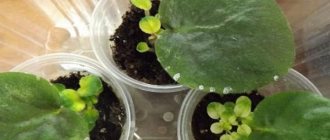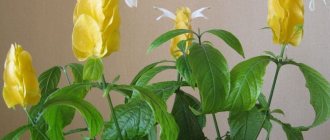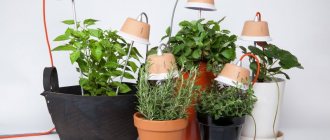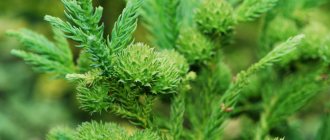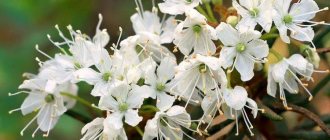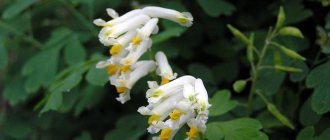For native plant enthusiasts, Perennial Lupine is preferred over Russell hybrids and other hybrid lupins that most people grow as garden plants. Perennial lupine, commonly known as wild lupine, native lupine, or blue lupine, is found throughout much of eastern North America, as well as along the shores of the Arctic Ocean. Once extremely common, its range has decreased significantly as a result of human development. And because it is an important food source for the caterpillars of several endangered butterfly species, the plant is attracting new interest as a garden plant and in wildflower restoration projects.
Wild blue lupine is very similar to the more colorful hybrid lupins, with distinctive palmate leaves that are attractive in the garden even when the plant is not in flower. Spiny blue inflorescences 10 to 25 centimeters tall appear in late spring or early summer on plants up to 60 centimeters tall. Perennial Lupine plants tend to be more muted in color than the piercingly bright caramel colors of hybrid lupins—usually blue or purple, but sometimes white or pink.
These flowers are herbaceous perennials and members of the pea family. Thus, they are nitrogen fixers. They actually improve the soil in which they are planted. Lupine is usually planted in the spring, either from potted nurseries or from seeds sown directly in the garden. For wild species, seedlings can be difficult to find, so you may have to buy seeds from a specialty store.
Like hybrid lupins, native Lupine perennial is a relatively short-lived perennial plant. It sometimes does not bloom until its second year, and individual plants may live no more than three to four years. But wild lupine self-seeds very easily, and once the bed is established, you will have reliable blooms every year.
Caring for perennial lupine
This native species is grown in much the same way as the more common hybrid garden lupins. Lupins, with their long tap roots, are one of those fussy plants that don't like to be transplanted. For this reason, it is best to try planting them directly into the garden. Lupines love cool weather and do not respond well to combinations of heat and humidity. In fact, some gardeners who once thrived with lupine are beginning to realize that climate change is making it difficult to grow the plant in their regions, while gardeners in very cool zones are finding a new delight in lupine.
Varieties
As already mentioned, there are about 200 subspecies of lupine in the world, but only 10 of them are cultivated. Nowadays, many breeders are working on developing new colors that will differ significantly from existing ones.
Lupine field
In multi-layer plantings, species of standard sizes are used; they look great from a distance and do not get lost among other plants. Most often, the trunks reach a height of up to 1 m, but this largely depends on the soil.
It is best to select plants so that they do not have sharp dividing lines; the rows should smoothly transition into one another. Then your flowerbed will look like a flower bedspread.
There are also dwarf varieties ; they are planted near borders or to separate one part of the garden or flower bed from another. Border lupine reaches a height of no more than 20 cm and comes in many different colors. The methods for growing flowers are completely identical to those for growing other species.
Neighborhood in a flower bed is important; you should carefully select your lupine neighbors; the surrounding flowers should not be higher than the standard.
Lupine gets along well with:
- irises
- daylily
- hosts
- delphiniums
- phlox
- nivyaniki
These plants will not allow the rhizome to grow, and the nitrogen released by the plant will provide enough vitality to its neighbors. Near lupine, all the listed varieties of flowers will be especially bright.
Next, we will get acquainted with the most popular species that can most often be found in flower beds and gardens:
Roussel
Lupine Roussel This variety is classified as a perennial; the seeds are usually sold in specialty stores as a mixture. The collection includes stamps with different brush colors; they can be yellow, white, carmine, pink, blue.
The standard is characterized as follows:
- erect plant with a powerful trunk
- reaches a height of 1-1.3 m
- each brush is about 30-40 cm
- Grows best in sunny areas, tolerates partial shade
Propagated by seeds, sown in open ground in early spring or before winter. The variety does not require special care; weeding, loosening the soil and periodic watering during drought will be sufficient. For the winter, the trunk must be pruned, even though the variety is considered frost-resistant, but covering it or mulching it won’t hurt. Lupine Roussel will tolerate short droughts well, but during the flowering period it is better to increase watering a little, then the tassels will be brighter and will please the eye a little longer.
A distinctive feature of the variety is that the brushes can be used for cutting, this stimulates the re-blooming of the trunk in July-August. The plant looks great in group plantings; single specimens are also good. Roussel is considered one of the most nitrogen-containing varieties of garden lupine.
Russell's Red Flame
Russell's Red Flame A perennial with bright, carmine-red tassels that looks great against a hedge. Excellent for group plantings, it will become an excellent distant background for the rest of the flowers of the multi-layered flower bed. This variety will create a spectacular landscape and solo, scarlet brushes look great on any site, and the green foliage will only favorably emphasize the richness of the color of the flowers.
The plant is sown according to the generally accepted rules for lupins; if the work is carried out correctly, flowering begins in late May-early June and lasts about a month. Repeat flowering is possible if the cutting rules are followed.
An adult standard has the following characteristics:
- plant height up to 1 meter
- flowers collected in a brush occupy about 45 cm on the stem
- The brush itself is quite dense, has many colors
- flowers are medium, up to 2 cm each
- leaves are large, finger-shaped
A distinctive feature of the variety is the special fragrant nature of the flowers; their aroma is delicate but persistent, especially spreading in the evenings.
Propagation is best done by seeds; cuttings may not always give the expected result. Seeds purchased in specialized stores will have a high percentage of germination and always guarantee excellent results in matching the color of the brush.
Governor
Governer This type of lupine has become the basis for the development of many varieties and hybrids for the garden. The resulting stems are distinguished by large flowers, and the brush in which they are collected is denser. Governor is otherwise called multileaf, since its stem is covered with many large leaves.
Govner is classified as a frost-resistant species of lupine; it is used for growing in multi-layered flower beds and back-ground edgings.
The general characteristics of the trunk are as follows:
- an adult plant reaches a maximum height of 1.4 m;
- refers to perennials;
- the inflorescence raceme can reach 45 cm;
- the flowers are large, tightly pressed to each other;
- The color of the flowers is blue-white, bright;
- The standard blooms for 3-4 weeks depending on the soil and watering;
- if the brushes are trimmed, re-blooming is possible in August;
- develops better on light soils;
- tolerates sunny areas well, but does not mind partial shade;
- the leaves are large, with slight pubescence on the underside, and have a bright green color.
The brushes look great in prefabricated bouquets, but they won’t last long. Governer loves to solo, but it’s better to admire him in a flowerbed. The species is usually propagated by seeds, but cuttings also give good results.
Chatelaine
Lupine Chatelaine The perennial with the most interesting color is the Chatelain species; the standard will also differ from its relatives in the height of the adult plant. Most often it is used in the middle line of multi-layer ridges. Like all lupins, it is not picky about soils, but it will develop better on light, loose soils, without stagnant water.
Sowing in open ground is carried out in accordance with all the rules and recommendations for this variety, seedlings appear under proper conditions in a month, flowering will not occur earlier than the second year of life.
Chatelaine has the following characteristics:
- the height of an adult plant reaches a maximum of 90 cm
- finger-shaped leaves on high stalks are alternately located along the stem
- the brush can reach 35 cm
- the flowers have a pleasant pink and white color
- each flower is medium size
- weak aroma was noted during flowering
Flowering occurs profusely in June-July; when the brush is cut off, flower stalks may reappear. Some gardeners grow this species as a low hedge that divides the garden into sections.
The secret to growing is to maintain a distance between bushes; it should be at least 20 cm.
Russell mix
Russell mix The perennial Russell has many variegated colors of brushes; most often it is sold in prefabricated mixes of various colors. Cultivation is standard; the species is distinguished from others by its high survival rates even in the harshest natural conditions. Lupine of this species will easily tolerate drought, with proper shelter it will overwinter well and will delight you with lush flowering in May.
The best places for growing will be sunny areas of the garden, but partial shade will not affect the trunk. Slightly alkaline and slightly acidic loams will allow the plant to fully show its beauty.
Russell's indicators are:
- the height of an adult trunk is about 50-70 cm
- the brush is quite large, can reach 35 cm
- flowers have a variety of colors, the most common are pink, purple, blue colors
- the flower is of medium size, fragrant
The view is not suitable for cutting; it is best to admire it in its natural environment. In flowerbeds it is better to place them in the middle rows; the low height facilitates use in flower beds.
A special feature of the species is the splendor of each cluster, so there should be enough space between plants when planting.
Excitement
Azart One of the most spectacular types of lupine is called Azart, its flowers are simply magnificent. There are no particular difficulties in sowing and further care, everything is according to the standard scenario. A feature of the species is its variegation and splendor of the brush with flowers. Azart is characterized by:
- the plant can reach 1 m in height
- a brush with flowers takes up about 45 cm
- each flower is medium in size, in rare cases can reach 4 cm
- The main use of the trunk is in multi-layered flower beds and ridges in the background
- The brushes are not suitable for cutting, they will not be able to please you with freshness for a long time, they will quickly begin to fade
Often the species is used near a hedge or to create a colorful carpet in one part of the garden.
The minaret is undersized
Low-growing minaret A low-growing perennial of this species looks great as a border plant; it is often used specifically for dividing areas of the garden or flower beds. The minaret will give preference to fertile soils in areas well lit by the sun. Propagation by seeds is preferable, but separating the bud along with the root collar has also worked well.
The variety looks great cut and lasts quite a long time in vases. Cultivation is carried out through seedlings or direct sowing in heated soil. Sowing seeds can be done in early April or before winter. Cutting off the inflorescences will stimulate the plant to bloom again.
It’s not difficult to recognize the low-growing Minaret:
- the height of an adult plant does not exceed half a meter
- flower brush can reach 25 cm
- flowering continues for more than a month
- leaves are green, finger-shaped on the petiole, large
- It is difficult to tolerate sudden changes in temperature, so when growing it is worth taking into account weather conditions
In order for the trunk to grow and develop successfully, the soil should be regularly loosened and weeds removed; among fertilizers, preference is given to superphosphate.
Rhapsody
Rhapsody The variety is classified as a perennial of medium height, excellent for growing on “poor” soils of the site. It will withstand winter cold in shelter; summer drought is also not terrible. But stagnation of water or flooding in the spring can destroy the trunk. Flowering is observed in the second year of life; the flowers have a variety of variegated colors.
The general characteristics are:
- perennial grows up to a maximum of a meter
- pyramid-shaped brush has a length of up to 50 cm
- the flowers are large, each up to 3 cm
- the inflorescence is dense, the flowers are close to each other
- great for cutting, continues to live and smell fragrant in water
- leaves are large, emerald green
The variety is used in the first year for landscaping; the voluminous balls will delight the eye with lush greenery. In the second year of life, the plant will catch your eye with variegated clusters of flowers of various colors.
tree-like
Tree lupine is a perennial that differs from other varieties and species by its powerful trunk with some semblance of bark. The height of the trunk can reach 1.5 meters; under proper conditions, two-meter plants can be found. The flowering period begins in the second year after sowing the seeds and lasts a little more than a month. Usually occurs in July-August, the clusters are large, fragrant, flowers can reach 5 cm.
This species does not grow in the middle zone; even with shelter and mulching, it often freezes completely . The southern regions are excellent for growing tree lupine.
Some gardeners plant several tree-like lupins with different colors on their plot at once; they look very impressive during the flowering period, but the leaves are no less decorative. Lush greenery will transform any garden.
Is lupine toxic?
Perennial lupine is a type of lupin that is toxic to humans and animals. All parts of plants, but especially seeds, contain various types of quinolizidine alkaloids. Alkaloids are found in many plants as an evolutionary adaptation that protects the plant from insect pests and animals. Some of these alkaloids, including those found in some types of lupine, can be fatal if ingested in very large quantities by people or pets. However, the seeds are bitter, so serious poisoning is rare, except in grazing animals such as goats and horses.
Description
Lupines decorating the slopes of the Alps
Nowadays, according to official information, there are slightly more than 200 subspecies of lupine, they differ in:
- trunk height
- color of inflorescences
- type of leaves
- life expectancy
But you should not consider lupine only an ornamental plant; all its parts are used in many areas of human activity:
- Lupine is classified as green manure; during growth and development, the root system of the flower accumulates a large amount of nitrogen. After dying, all substances pass into the soil and contribute to the growth of the next crop that will grow in this place.
- Annual varieties are excellent fodder for animals, with yellow, white and multi-leaf varieties being the most prized.
- The seeds of the plant are also valuable; they are used in fisheries for fattening fish.
- The pulp and paper industry took lupine straw for its needs.
- The seeds of the plant are used in pharmacology and cosmetology.
Parts of some plant species are used in soap making and added to the base material in the manufacture of plastics. Flower growers and summer residents value lupine for the extraordinary beauty of its inflorescences and ease of care and propagation.
It has been scientifically proven that in terms of nutrients, 1 ton of lupine is equivalent to 20 tons of manure.
Lupine represents the legume family in the flowerbed; its appearance resembles a shrub or subshrub.
The general description of the standard is as follows:
- The ground part is represented by a herbaceous or woody erect stem.
- The leaves are arranged alternately on the stem, visually resembling a palm with long fingers.
- The final part of each shoot is a racemose inflorescence with many flowers.
The underground part of the plant is represented by a tap root system, and this is what will prevent the plant from propagating by dividing the bush.
Flower growers divide lupins into annuals and perennials; they will differ in the timing of flowering and seed ripening. Growing and caring for plants will be absolutely identical, as will propagation.
Most often, lupine is used by flower growers in multi-layered flower beds and edgings; the plant is suitable for both classic and modern site design solutions. Sometimes landscape designers use lupine to create a piece of wild, untouched natural beauty in a certain part of the territory. For contrast, they take varieties with different colors of inflorescences, but lupine of the same color also looks great.
Reproduction of perennial lupins
These plants are prolific self-sowers and small volunteer seedlings from the garden can be transplanted. However, do this when they are still small, as the plants quickly develop deep taproots that do not like transplanting. You can also collect the seed pods, remove and dry the seeds, and then replant them in your desired locations.
Growing seedlings
The unpretentious species takes root well and germinates fairly quickly. Even a novice gardener can create the necessary conditions.
Soil and container
The soil should be nutritious: 1 part each of turf soil and peat + half as much fine, sifted sand. Before placing the seeds, the substrate is slightly moistened with a spray bottle. The soil for lupine is not only nutritious, but also loose, so that the beans do not rot.
Seed germination is carried out in large containers with compartments or individual pots.
High quality peat pots, yogurt containers, and disposable dishes with a volume of about 200 ml are suitable. Important! Before planting, the seeds are combined with powder prepared from dried lupine roots. The essence of the method is to activate the reproduction of nitrogen-absorbing bacteria.
Seedling care
Important details:
- After planting, the seeds are lightly sprinkled with soil, sprayed, and the container is covered with a stack or film.
- To germinate seedlings, you need a temperature from +20°C to + 22°C.
- Periodically, the substrate is moistened, but not flooded, otherwise the seeds will rot.
- The container with seedlings should be in a bright room, but not in direct sunlight.
Transplanting
Moving a grown lupine into the ground is allowed only after the appearance of the third, true leaf. You should not wait until the plant becomes too large and stretched out: late replanting can lead to damage to the rapidly growing taproot system.
Many species do not tolerate cold well, and seedlings should be planted in a flowerbed or garden plot after the night frosts have completely stopped and the soil has warmed up. The timing is slightly different for each region.
Protection from pests and diseases
Important details:
- The perennial plant is attacked by parasitic insects: tuberous weevils and aphids. When pests are identified, adults, larvae and eggs are collected. To destroy parasites, treat the soil and green mass with insecticides. Effective drugs: Actellik, Regent, Aktara, Confidor, Fitoverm. With a small number of pests, garlic tincture helps.
- The herbaceous perennial rarely gets sick; the main problem is anthracnose. The fungal disease is a consequence of excessive soil moisture, growing lupine in the shade in combination with low temperatures and waterlogging of the soil. To destroy fungal flora, fungicides are used: Skor, Arcerid, Fundazol, Ridomil, Topaz. It is important to adjust watering: pathogenic flora develops in wet areas. If the planting area is incorrect (lots of shade, lowland), next time you need to take into account the mistakes and plant the “wolf” flower in a sunny, open area.
Methods for increasing plant resistance to diseases and pest attacks:
- dressing seeds in a fungicide solution;
- timely removal of weeds and application of fertilizers;
- creating suitable conditions for vegetation;
- careful digging of the soil before planting the “wolf” flower;
- prevention of excess humidity: moderate watering,
- optimal soil composition;
- rotation of crops on the site;
- a set of agrotechnical measures taking into account the type and variety;
- timely removal of infected specimens, wilted, dried leaves and inflorescences.
Requirements for soil and planting site
In the middle zone, lupins are found in the wild. Here they grow everywhere: along roads, fences, without needing any care. The soil of the region is ideal for them. Lupins prefer loose and moderately fertilized soil. They do not tolerate soil:
- salty;
- too sour;
- with a lot of lime.
Lupines do not grow well in overly fertilized beds. The plant belongs to the green manure plant; it is capable of accumulating nitrogen compounds on root nodules. Flowers can be planted in the garden next to vegetable crops, on the sides of the beds.
Advice : To prevent the plant from uncontrollably filling the garden, the seeds are not allowed to ripen. The peduncle is removed along with the fruits.
Varietal lupine is a sun-loving flower; light-filled areas of the garden are allocated for it. In open places they grow and bloom more luxuriantly. Wild representatives of the species thrive in partial shade under trees.
Planting seeds in open ground
It is often not possible to grow luxurious flowers from purchased seeds: the germination rate is not always good. If a florist has been breeding lupins for several years, then it is advisable to collect the beans at their summer cottage and use them for breeding a spectacular species.
Deadlines
There are two methods:
- autumn planting of seeds. In this case, the planting material overwinters in the ground, produces good seedlings in the spring, and original pyramidal inflorescences appear in the summer (around July);
- planting seeds in spring. The method is used more often. The optimal time is mid-April. With sufficient heat and moisture, luxurious flowering can be observed as early as June.
Selecting a location
On a note:
- For planting plants with pyramidal inflorescences of bright and delicate shades, an area with diffused lighting and a minimal amount of shadow is suitable. The scorching sun negatively affects flowers, but a lack of lighting does more harm.
- Lupines are not planted in shaded places or under trees: without sufficient light, the inflorescences are small, inconspicuous, the bushes are weak, the flowering period is short or does not occur at all.
- The site should not be in a lowland: lupine does not like excess moisture that accumulates after rain.
Landing rules
Important details:
- suitable soil is an alkaline loamy or slightly acidic substrate. Diseases develop more often in an alkaline environment. It is useful to add peat or add a little acidic solution;
- adding lime flour is an important stage in preparing the soil for planting plants with tall, lush inflorescences. For 1 sq. m, 5 kg of bulk product is enough. Lime flour is applied in autumn, winter (on snow) or in spring, while digging the soil;
- Frequent loosening is not required: the root system actively pushes the road deeper, and the soil becomes softer.
Interesting fact! Lupine enriches the soil through the development of nitrogen-fixing microorganisms on the roots of the plant. The process is most active on blue lupins.
general information
The menacing name of lupine, which literally translates as “wolf,” has little in common with the delicate decorative flower. In their natural environment, fancy wolf beans are found almost everywhere - from Alaska to the Mediterranean-African region. There are several hundred species, but only a few have taken root in culture.
Strong shoots are covered with numerous palmate leaves of complex shape. Large racemes are covered with numerous elastic flowers and in some species in nature can reach a meter in length.
Photo: bugaga.ru
Lupine is surprisingly resistant to drought, having been able to adapt even to the conditions of Arizona and Chile. The powerful taproot can reach up to 2 m into the ground, thanks to which the flower survives well in any conditions. The specificity is that the surface parts quickly absorb nitrogen, and then release it into the surrounding soil.
Among lupins there are annual and perennial species of different sizes - herbaceous, semi-shrubs or even full-fledged bushes. At the beginning of the twentieth century, breeders began to actively develop ornamental varieties for gardening - Russell hybrids.
Photo: ogorod-bez-hlopot.ru






